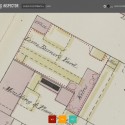Back in September last year I blogged about the implications for cultural heritage and digital humanities crowdsourcing projects that used simple tasks as the first step in public engagement of advances in machine learning that mean that fun, easy tasks like image tagging and text transcription could be done by computers. (Broadly speaking, ‘machine learning’ is a label for technologies that allow computers to learn from the data available to them. It means they don’t have to specifically programmed to know how to do a task like categorising images – they can learn from the material they’re given.) One reason I like crowdsourcing in cultural heritage so much is that time spent on simple tasks can provide opportunities for curiosity, help people find new research interests, and help them develop historical or scientific skills as they follow those interests. People can notice details that computers would overlook, and those moments of curiosity can drive all kinds of new inquiries. I concluded that, rather than taking the best tasks from human crowdsourcers, ‘human computation‘ systems that combine the capabilities of people and machines can free up our time for the harder tasks and more interesting questions.
I’ve been thinking about ‘ecosystems’ of crowdsourcing tasks since I worked on museum metadata games back in 2010. An ecosystem of tasks – for example, classifying images into broad types and topics in one workflow so that people can find text to transcribe on subjects they’re interested in, and marking up that text with relevant subjects in a final workflow – means that each task can be smaller (and thereby faster and more enjoyable). Other workflows might validate the classifications or transcribed text, allowing participants with different interests, motivations and time constraints to make meaningful contributions to a project. The New York Public Library’s Building Inspector is an excellent example of this – they offer five tasks (checking or fixing automatically-detected building ‘footprints’, entering street numbers, classifying colours or finding place names), each as tiny as possible, which together result in a complete set of checked and corrected building footprints and addresses. (They’ve also pre-processed the maps to find the building footprints so that most of the work has already been done before they asked people to help.)
Read More: Ecosytems of People + Machines Can Help Crowdsourcing Projects

